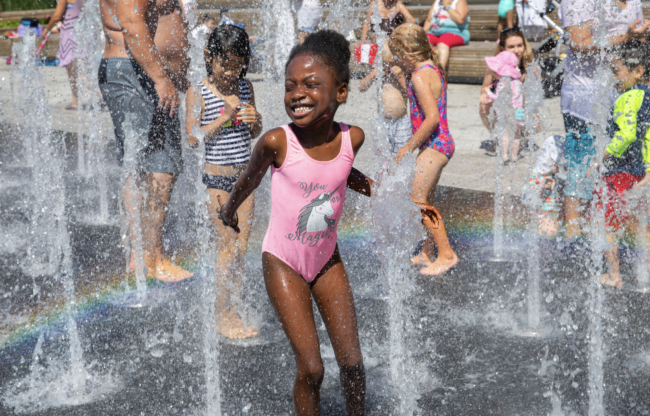Summer in NYC has always been synonymous with sizzling pavements, uncapped fire hydrants and sunscreen. In most previous years, the most intense heat has been relegated to July and August, with pleasant temperatures in early June. However, this year, as extreme temperatures assault the United States and countries worldwide, New York residents experienced two weeks of stifling heat labeled as a “weather emergency” by the New York State Department of Health, with temperatures rising to the high 90s.
Though all government organizations lifted the categorization of the weather emergency in New York and other northeastern states last week because the heat has subsided, temperatures may still rise again in the coming weeks. Meanwhile, the heat has migrated across the country to the West Coast, affecting states such as California, Oregon and Arizona, with a prolonged and severe heat wave with temperatures rising to the 100s, creating raging wildfires.
Rose Posternak (IV) experienced the heatwave in California firsthand. “During my time in California, I could only spend time outdoors in the early morning or late at night, and even then it was uncomfortably warm. Luckily I had access to a pool and could swim to cool down,” she recounted.
In Nyack, New York, Bob Montera, a Fieldston faculty member, responded to the heat by running his usual 10 miles daily at 5:00 am, as the sun rose and before the heat built up. “Running along the Hudson River also helped,” said Montera. “There’s always a breeze. The town library, like all public libraries, became a great cooling center to work or seek refuge during the day.”
According to the National Weather Service, “Heat is one of the leading weather-related killers in the United States, resulting in over one thousand fatalities each year.” In the United States, heat results in more deaths than hurricanes, tornados, earthquakes or floods. Each summer, around 350 New York residents die of heat-related causes, with lack of AC being the most frequent cause of death.
The most vulnerable populations – pregnant women, older adults, young children and people with chronic health problems – are most at risk for fatalities, which drinking water, limiting strenuous outdoor activity and wearing lightweight, loose-fitting clothing can prevent.
Climate change exacerbates the dangers of heat waves, which makes them longer, more intense and more frequent. Many other effects of climate change have appeared this summer: globally, weather emergencies have been widespread, including Hurricane Beryl, a category four storm that destroyed power lines, crushed vehicles, and endangered thousands of houses.
Weather emergencies may only worsen in the future, and experts predict sweltering summers, floods and other dangerous events will only become more common. If greenhouse gas emissions are not lowered, daily high and low temperatures will increase by at least 5 degrees Fahrenheit by the 2050s.
As demonstrated by the current rise in temperatures, the effects of climate change are real – and scorching.






